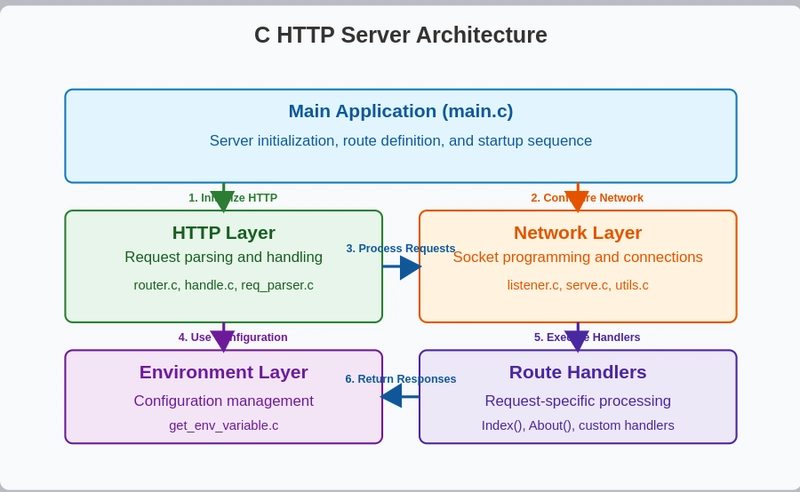Writing Clean Code in JavaScript – Best Practices for Readable and Maintainable Code
Building scalable and effective apps requires writing JavaScript code that is clear, legible, and maintainable. Writing code that is simple for others to understand and change, including your future self, is essential whether you're working alone or with a team. Clean code guarantees long-term maintainability, facilitates cooperation, and improves debugging. To assist you in writing clean JavaScript code, we will go further into best practices, sophisticated methods, and useful tactics in this blog. 1. Use Meaningful and Descriptive Variable Names It is important for variable names to be descriptive and unambiguous. Avoid using unclear terminology, single-character names (except for loop iterators), and abbreviations. The code is self-explanatory because of descriptive names, which eliminates the need for extra comments. Bad Example: let x = 10; let y = 20; let z = x + y; Good Example: let firstNumber = 10; let secondNumber = 20; let sum = firstNumber + secondNumber; Tips for Naming Variables: Use camelCase for variables and functions: userAge, calculateTotal. Use PascalCase for classes and constructors: UserProfile, ShoppingCart. Use UPPER_SNAKE_CASE for constants: MAX_ALLOWED_USERS, API_URL. Boolean variables should start with is, has, or should: isAdmin, hasAccess. 2. Keep Functions Small and Focused A function should adhere to the Single Responsibility Principle (SRP) and carry out a single, defined task. Divide a function into smaller, reusable ones if it gets too complicated. Bad Example: function processUserData(user) { console.log(`User: ${user.name}`); user.isActive = true; sendWelcomeEmail(user.email); updateDatabase(user); } Good Example: function activateUser(user) { user.isActive = true; } function notifyUser(email) { sendWelcomeEmail(email); } function processUserData(user) { console.log(`User: ${user.name}`); activateUser(user); notifyUser(user.email); updateDatabase(user); } Key Principles for Functions: Functions should do one thing and one thing only. Functions should be short – ideally, no more than 10-15 lines. Use function parameters instead of global variables. Use meaningful names for functions that describe what they do. 3. Use Consistent Formatting and Code Style Readability is increased with consistent formatting. Make sure that bracket placement, spacing, and indentation are all consistent. Bad Example: function greet(name){console.log("Hello, "+name);} Good Example: function greet(name) { console.log(`Hello, ${name}`); } Tools for Code Formatting: ESLint: Enforces coding standards and identifies errors. Prettier: Auto-formats code for consistency. EditorConfig: Maintains consistent styles across different editors. 4. Avoid Using Magic Numbers and Strings Code is more difficult to comprehend and maintain when it contains hardcoded strings and magic numbers. Named constants should be used instead. Bad Example: if (user.role === "admin") { grantAccess(); } Good Example: const ADMIN_ROLE = "admin"; if (user.role === ADMIN_ROLE) { grantAccess(); } 5. Use Default Parameters and Destructuring Code readability is enhanced and duplication is decreased using modern JavaScript capabilities. Bad Example: function createUser(name, age, country) { const user = { name: name || "Unknown", age: age || 0, country: country || "Unknown", }; return user; } Good Example: function createUser({ name = "Unknown", age = 0, country = "Unknown" } = {}) { return { name, age, country }; } 6. Handle Errors Properly Effective error management improves user experience and avoids unplanned crashes. Bad Example: function getUserData(userId) { return fetch(`https://api.example.com/users/${userId}`) .then(response => response.json()) .catch(error => console.log(error)); } Good Example: async function getUserData(userId) { try { const response = await fetch(`https://api.example.com/users/${userId}`); if (!response.ok) throw new Error("User not found"); return await response.json(); } catch (error) { console.error("Error fetching user data:", error); return null; } } 7. Use Comments Wisely Comments should explain why something is done, not what the code does. Bad Example: // Increment count by 1 count = count + 1; Good Example: // Increase count when a new user joins count++; 8. Follow the DRY (Don’t Repeat Yourself) Principle Avoid duplicating code. Instead, use functions, loops, or reusable components. Bad Example: function greetUser(user) { console.log("Hello, " + user.name); } function greetAdmin(admin) { console.log("Hello, " + admin.name); } Good Example: function greet(person) { con

Building scalable and effective apps requires writing JavaScript code that is clear, legible, and maintainable. Writing code that is simple for others to understand and change, including your future self, is essential whether you're working alone or with a team.
Clean code guarantees long-term maintainability, facilitates cooperation, and improves debugging.
To assist you in writing clean JavaScript code, we will go further into best practices, sophisticated methods, and useful tactics in this blog.
1. Use Meaningful and Descriptive Variable Names
It is important for variable names to be descriptive and unambiguous. Avoid using unclear terminology, single-character names (except for loop iterators), and abbreviations. The code is self-explanatory because of descriptive names, which eliminates the need for extra comments.
Bad Example:
let x = 10;
let y = 20;
let z = x + y;
Good Example:
let firstNumber = 10;
let secondNumber = 20;
let sum = firstNumber + secondNumber;
Tips for Naming Variables:
- Use camelCase for variables and functions:
userAge, calculateTotal. - Use PascalCase for classes and constructors:
UserProfile, ShoppingCart. - Use UPPER_SNAKE_CASE for constants:
MAX_ALLOWED_USERS, API_URL. - Boolean variables should start with
is, has,or should:isAdmin, hasAccess.
2. Keep Functions Small and Focused
A function should adhere to the Single Responsibility Principle (SRP) and carry out a single, defined task. Divide a function into smaller, reusable ones if it gets too complicated.
Bad Example:
function processUserData(user) {
console.log(`User: ${user.name}`);
user.isActive = true;
sendWelcomeEmail(user.email);
updateDatabase(user);
}
Good Example:
function activateUser(user) {
user.isActive = true;
}
function notifyUser(email) {
sendWelcomeEmail(email);
}
function processUserData(user) {
console.log(`User: ${user.name}`);
activateUser(user);
notifyUser(user.email);
updateDatabase(user);
}
Key Principles for Functions:
- Functions should do one thing and one thing only.
- Functions should be short – ideally, no more than 10-15 lines.
- Use function parameters instead of global variables.
- Use meaningful names for functions that describe what they do.
3. Use Consistent Formatting and Code Style
Readability is increased with consistent formatting. Make sure that bracket placement, spacing, and indentation are all consistent.
Bad Example:
function greet(name){console.log("Hello, "+name);}
Good Example:
function greet(name) {
console.log(`Hello, ${name}`);
}
Tools for Code Formatting:
- ESLint: Enforces coding standards and identifies errors.
- Prettier: Auto-formats code for consistency.
- EditorConfig: Maintains consistent styles across different editors.
4. Avoid Using Magic Numbers and Strings
Code is more difficult to comprehend and maintain when it contains hardcoded strings and magic numbers. Named constants should be used instead.
Bad Example:
if (user.role === "admin") {
grantAccess();
}
Good Example:
const ADMIN_ROLE = "admin";
if (user.role === ADMIN_ROLE) {
grantAccess();
}
5. Use Default Parameters and Destructuring
Code readability is enhanced and duplication is decreased using modern JavaScript capabilities.
Bad Example:
function createUser(name, age, country) {
const user = {
name: name || "Unknown",
age: age || 0,
country: country || "Unknown",
};
return user;
}
Good Example:
function createUser({ name = "Unknown", age = 0, country = "Unknown" } = {}) {
return { name, age, country };
}
6. Handle Errors Properly
Effective error management improves user experience and avoids unplanned crashes.
Bad Example:
function getUserData(userId) {
return fetch(`https://api.example.com/users/${userId}`)
.then(response => response.json())
.catch(error => console.log(error));
}
Good Example:
async function getUserData(userId) {
try {
const response = await fetch(`https://api.example.com/users/${userId}`);
if (!response.ok) throw new Error("User not found");
return await response.json();
} catch (error) {
console.error("Error fetching user data:", error);
return null;
}
}
7. Use Comments Wisely
Comments should explain why something is done, not what the code does.
Bad Example:
// Increment count by 1
count = count + 1;
Good Example:
// Increase count when a new user joins
count++;
8. Follow the DRY (Don’t Repeat Yourself) Principle
Avoid duplicating code. Instead, use functions, loops, or reusable components.
Bad Example:
function greetUser(user) {
console.log("Hello, " + user.name);
}
function greetAdmin(admin) {
console.log("Hello, " + admin.name);
}
Good Example:
function greet(person) {
console.log(`Hello, ${person.name}`);
}
9. Use Modern JavaScript Features
Leverage ES6+ features like let and const, template literals, arrow functions, and async/await.
Example:
const greet = (name) => console.log(`Hello, ${name}!`);
10. Write Unit Tests
Testing your code ensures reliability. Use frameworks like Jest or Mocha.
Example:
const add = (a, b) => a + b;
test("adds two numbers", () => {
expect(add(2, 3)).toBe(5);
});
Seamless Java API integration starts with best practices and security!










































































































































































![[The AI Show Episode 142]: ChatGPT’s New Image Generator, Studio Ghibli Craze and Backlash, Gemini 2.5, OpenAI Academy, 4o Updates, Vibe Marketing & xAI Acquires X](https://www.marketingaiinstitute.com/hubfs/ep%20142%20cover.png)
















































































































































































































































.jpg?#)













































































































































![YouTube Announces New Creation Tools for Shorts [Video]](https://www.iclarified.com/images/news/96923/96923/96923-640.jpg)

![Apple Faces New Tariffs but Has Options to Soften the Blow [Kuo]](https://www.iclarified.com/images/news/96921/96921/96921-640.jpg)

































































































































